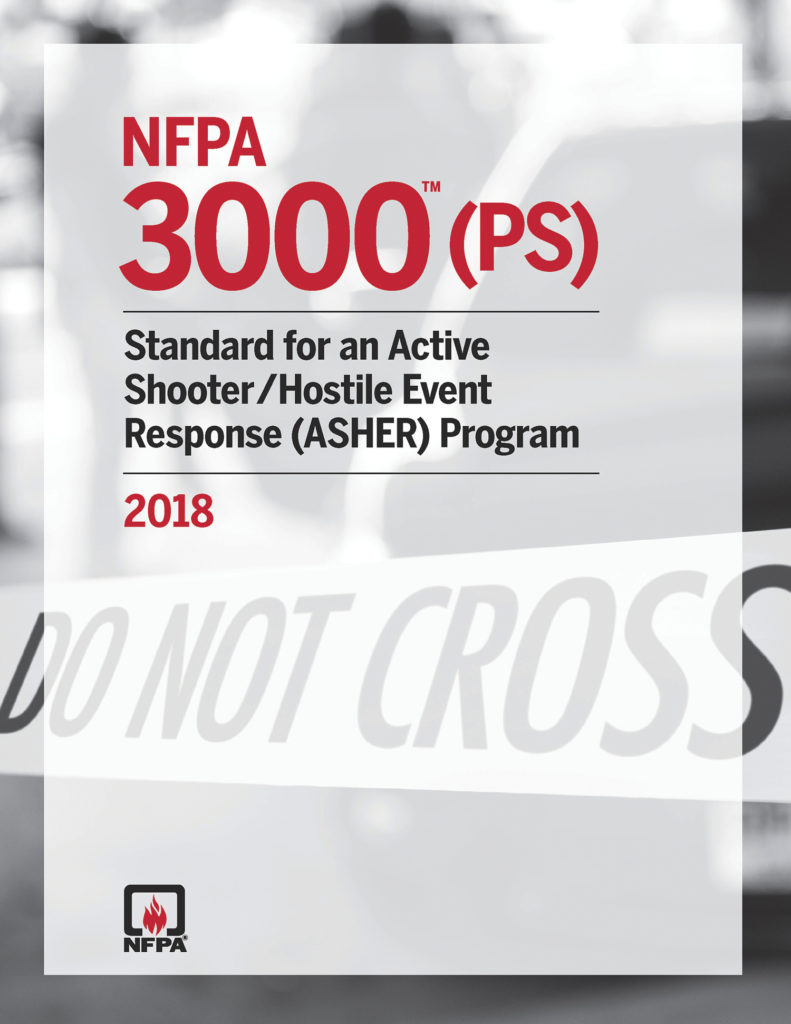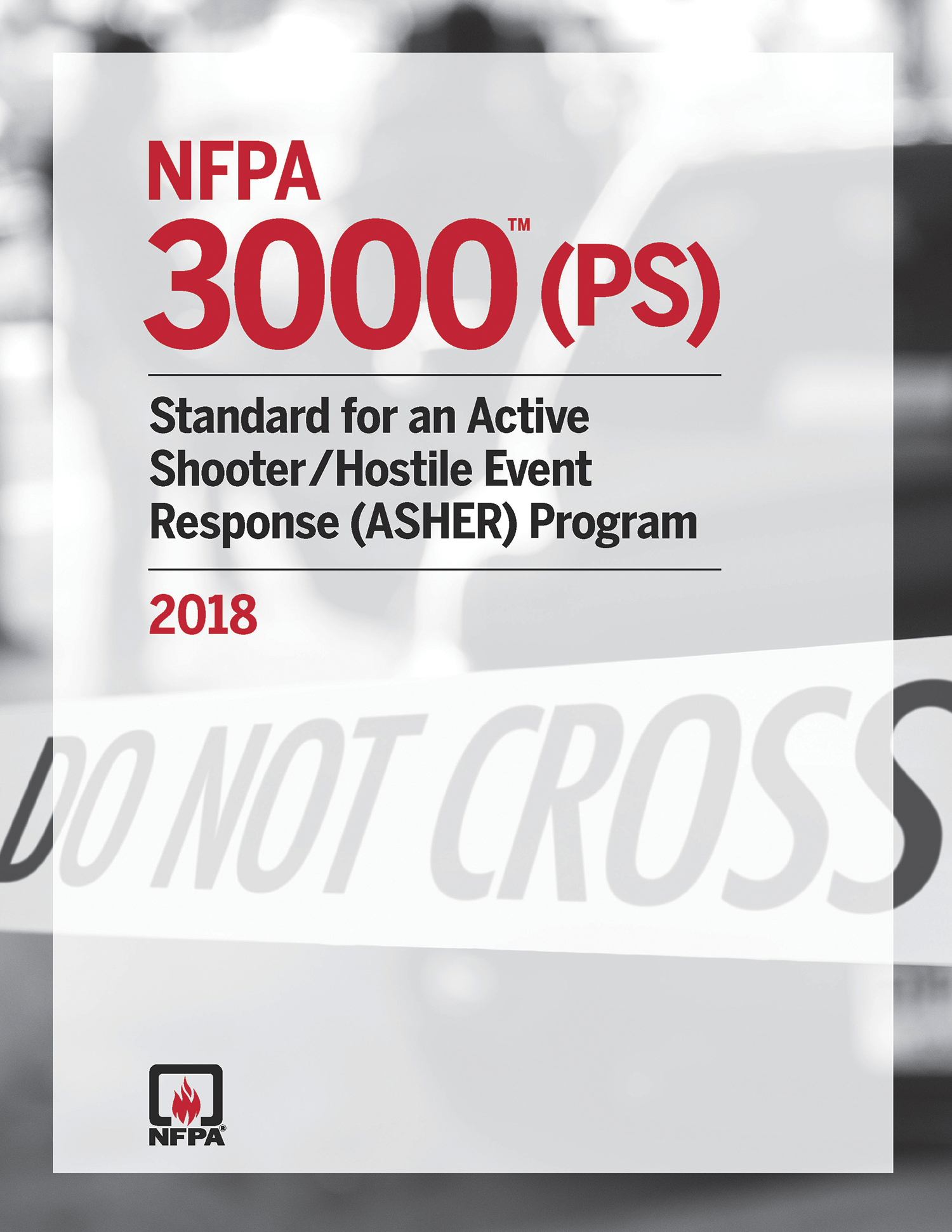 The National Fire Protection Association (NFPA) recently released a new standard – NFPA 3000 – which sets guidelines for Active Shooter/Hostile Event Response (ASHER). According to the NFPA 3000 Fact Sheet:
The National Fire Protection Association (NFPA) recently released a new standard – NFPA 3000 – which sets guidelines for Active Shooter/Hostile Event Response (ASHER). According to the NFPA 3000 Fact Sheet:
Planning
• Assessing risks
• Developing community-wide programs
Responding
• Establishing competencies
• Communicating to all stakeholders
Recovering
• Planning recovery efforts
• Taking into account healthcare and mental health issues
NFPA 3000’s Chapter 9 – Facility Preparedness, addresses requirements for facilities that may be at risk of an ASHER incident. In addition to staff procedures, notification of building occupants, periodic drills, and adequate supplies for first-aid response, the chapter covers emergency action plans for evacuation, relocation, and secure-in-place procedures.
There are several key points in this chapter that relate to physical security and lockdown:
- Emergency action plans must include the location and identification of lockable spaces as well as exit doors leading to the exterior. Doors in the means of egress must meet all of the requirements of NFPA 101 – The Life Safety Code.
- Plans must include procedures to lock designated doors from within the spaces, and must meet the requirements of NFPA 101 with regard to locking/unlocking and unlatching. This includes the ability to unlatch the door from the egress side with one releasing operation, and without a key, tool, special knowledge, or effort. The releasing mechanism for unlocking and unlatching the door must be located between 34 inches and 48 inches above the finished floor.
- Where required by NFPA 101, doors must be lockable from the inside without opening the door, and unlockable from the outside with the necessary key or other credential.
These requirements help to ensure that the secured doors provide for unimpeded egress, allow authorized access, and do not create barriers for people with disabilities.
Has your jurisdiction adopted NFPA 3000?
~~~
Learn more about NFPA 3000:
- Purchase NFPA 3000 or read online for free
- NFPA Journal – Writing History
- NFPA Journal – People Get Ready
- NFPA Readiness Assessment
- NFPA 3000 Online Training
You need to login or register to bookmark/favorite this content.






Thanks so much for publishing, I’m looking forward to reading, and seeing the discussion on your site.
Thanks for the update Lori. Following the NFPA 101 LIfe Safety Code is a welcome reference. Also worth mentioning in NFPA 3000 is Chapter 5, which covers risk assessment. Methodology for that process is laid out and one of the referenced documents in the appendix, A5.4.2, is the PASS Safety and Security Guidelines, which can be downloaded free at http://www.passk12.org. The Guidelines are currently being revised (4th Edition) and provide a solid road map for schools to follow as they assess and plan for their safety and security needs.
Great point! Thanks!
– Lori
I just reviewed this document yesterday and today 8 to 10 more dead and the early reports once again imply a fire alarm was pulled creating a victim rich environment. Not one mention regarding fire alarm evacuation policy. Accurate or not the talking heads on tv are saying it and i’m certain the next killer is listening. Makes it hard to believe the industry is listening. Very very disappointing.
The industry is listening. Some states and local jurisdictions already have policies in place for delayed evacuation when the fire alarm sounds. Indiana just passed a law to allow this, although it is very short on details. I found a policy for Minnesota and I sent some questions to the MN SFM’s office. He will answer them asap and I will share whatever I learn. It’s a major topic of discussion.
– Lori